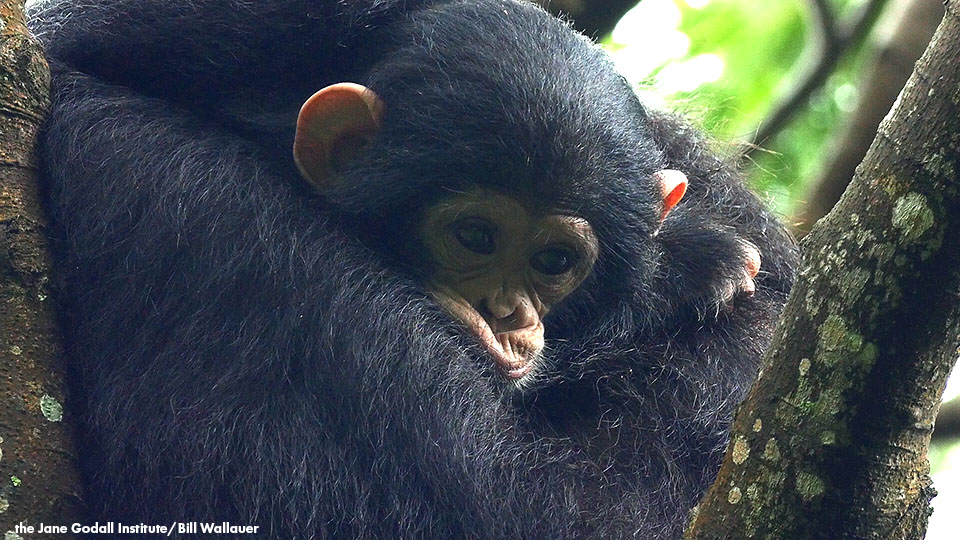

A chimpanzee leader must play politics just as a human one would. It is not uncommon for chimpanzee societies to mirror human societies. The victorious group, however, weakened by the civil war, quickly lost much of their territory to a separate group. Between 19, the northern faction killed off the majority of the southern group and conquered territory. The war began after the death of an alpha male divided the group into a northern and southern faction. This became evident in the 1970s in Gombe Stream National Park in Tanzania, where Jane Goodall observed what would be known as the “Gombe Chimpanzee War.” The war, the only known chimpanzee war to have occurred, revealed just how complex politics can be in chimpanzee society. Although chimpanzees are mostly peaceful, they can be fiercely territorial and will engage in violent battles to gain control of a group or land rich in resources. Depending on their habitat, a healthy group may control anywhere between 2.5 and 10 square miles of territory. However, the main group is not always together and they may break off into smaller groupings for months at a time. Activity budgets also show that chimpanzees spend about 25% of their time socializing, 12% traveling, and 20% resting.Įastern chimpanzees live in large groups of 50 to 100 individuals. Depending on the season, they will spend somewhere between a third and a half of their time foraging. Additionally, Eastern chimpanzees have distinctly shorter limbs than other chimpanzees.Ĭhimpanzees are most active during the day. Eastern chimpanzees have a particularly round head and thinner, more subtle brow ridges. The most noticeable differences between the Eastern chimpanzee and the other subspecies are seen in the head. The chimpanzee foot features an opposable big toe spaced far apart from the other toes allowing them to grasp the branches and maintain balance as they travel through the trees. This allows humans to close their legs together and walk upright, while chimps can only walk upright in short spurts. Human thighs slope inward while chimpanzee thighs slope outward. Another major difference between humans and chimps is how our legs are built. Chimpanzees are too heavy to gracefully climb like the monkeys who inhabit the same areas, but they can climb well enough to forage for the best fruit. Their arms are significantly longer than ours, with long fingers and short thumbs, adapted for climbing trees. Chimpanzee physiology is not all that different from human physiology. Once one looks past the hair, it is easy to see that chimpanzees are our closest relatives, having only diverged from humans 4–8 million years ago.
#CHIMPANZEE CONSERVATION STATUS SKIN#
Eastern chimpanzees tend to have darker skin than the other subspecies. Chimpanzees have pink skin early in life, which turns black as they mature. Their bare skin is exposed on their hands, face, and feet. Due to that and the lack of studies pertaining specifically to the Southeastern chimpanzee, this profile will treat both groups as members of the same subspecies, but their differences will be noted when applicable.Ĭhimpanzees are robust apes with black hair covering most of their bodies. The Southeastern chimpanzee lives everywhere south of DRC’s Ituri province in DRC, Uganda, Rwanda, Burundi, and Tanzania, while the “original” subspecies is found to the north and west of Ituri.Īlthough there are notable differences between the two groups, most organizations still consider them to be a single subspecies. The famed Australian primatologist Colin Groves proposed that the Eastern chimpanzee subspecies be split into the Eastern chimpanzee and Southeastern chimpanzee ( P. There is also a small population in Burundi and there may still be some chimpanzees in Central African Republic and South Sudan, but this cannot be confirmed. The Eastern chimpanzee is found in the rainforests of the Democratic Republic of Congo (DRC), Rwanda, Tanzania, and Uganda. DICHOTOMOUS KEY-IDENTIFY TAMARIN AND LEMUR SPECIES.LIFE IN THE WORLD’S TROPICAL RAINFORESTS.THE CASE OF THE DISAPPEARING HABITIT: THE CANDY CULPRIT.ALPHABET SOUP OF CONSERVATION-VIDEO AND INTRODUCTION.10 OF THE MOST ENDANGERED PRIMATE SPECIES.10 PRIMATE SPECIES YOU PROBABLY NEVER HEARD OF.10 OF THE MOST WELL-KNOWN PRIMATE SPECIES.“TRUE LEMURS,” BAMBOO LEMURS, RUFFED LEMURS.GRIVET, MALBROUCK, TANTALUS, GREEN, AND VERVET MONKEYS.


 0 kommentar(er)
0 kommentar(er)
